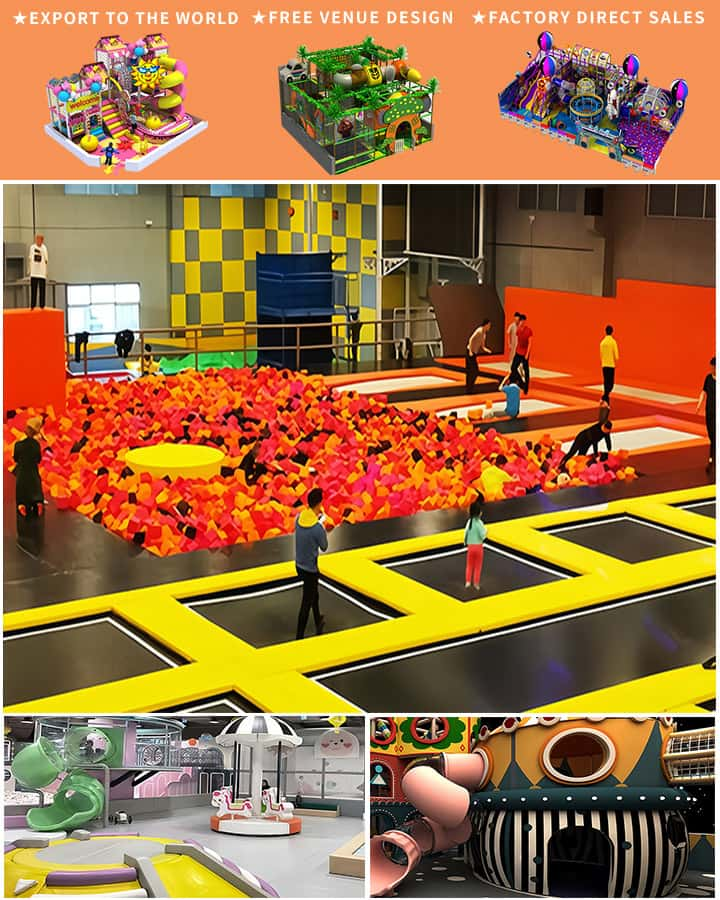Planning to set up an indoor playground? One of the most critical factors to consider is the cost associated with the various pieces of equipment. Whether you’re a seasoned entrepreneur or a first-time business owner, understanding these costs can be the difference between success and financial struggle. This article breaks down everything you need to know about the cost of indoor playground equipment, from basic components to more complex installations.
Types of Indoor Playground Equipment
Indoor playgrounds typically feature a variety of equipment designed to entertain children while also providing physical challenges that promote development. Common types of equipment include:
1. Soft Play Areas
These are often filled with foam shapes, ball pits, and climbing structures. Ideal for young children, they provide a safe environment for crawling and jumping.
2. Slides
Available in various sizes and designs, indoor slides range from simple to multi-level structures. They add excitement and are often a focal point of the playground.
3. Climbing Walls
Perfect for older kids, climbing walls come in different styles like vertical drops and inclined surfaces. They offer both fun and physical exercise.
4. Trampolines
Trampolines are popular attractions but require safety measures to prevent injuries. They can be standalone or integrated into larger play structures.
5. Interactive Games
 These include arcade games, prize grabbers, and other interactive setups that combine fun with mental engagement.
These include arcade games, prize grabbers, and other interactive setups that combine fun with mental engagement.
Factors Affecting Cost
Understanding the cost involves looking at several key factors:
1. Size and Dimensions
Larger equipment generally comes with higher price tags due to increased material and manufacturing costs. Custom sizes might also be more expensive than standard dimensions.
2. Quality of Materials
Higher quality materials, such as durable plastics and non-toxic paints, ensure longevity and safety but will increase costs. Always opt for quality over cheaper alternatives to avoid frequent replacements and potential safety hazards.
3. Complexity
The more complex the structure, the higher the manufacturing and installation costs. Multi-level play areas with various interactive elements tend to be pricier.
4. Installation and Maintenance
Some equipment requires professional installation, adding to the initial cost. Ongoing maintenance, including cleaning and occasional repairs, should also be factored into your budget.
5. Brand and Manufacturer
Reputable brands may charge a premium but often provide better quality and customer service. Lesser-known manufacturers might offer lower prices but could compromise on durability or safety standards.
Budgeting Tips
1. Assess Your Needs
Determine the target age group and specific requirements for your indoor playground. Not all equipment will be suitable for every demographic.
2. Compare Prices
Obtain quotes from multiple suppliers to get a sense of the market range. Don’t forget to check online reviews and testimonials to gauge reliability.
3. Seek Financing Options
If the initial investment seems steep, explore financing options such as business loans or leasing equipment to spread out the costs over time.
4. Prioritize Safety Standards
Ensure all equipment meets local health and safety regulations to avoid future legal issues and additional expenses. Investing in high-quality, certified equipment can save money in the long run by reducing liabilities.
Final Thoughts
Investing in indoor playground equipment is a significant undertaking that requires careful planning and budgeting. By understanding the various types of equipment available and the key factors affecting costs, you can make informed decisions that balance quality with affordability. Remember, the ultimate goal is to create a safe, enjoyable environment that keeps children coming back while ensuring the business remains profitable.
Whether you’re starting small or going all out with a comprehensive setup, thorough research and smart budgeting will pave the way for a successful indoor playground venture.




